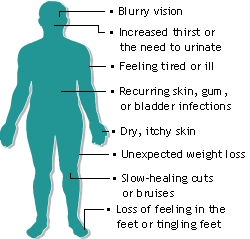
Diabetes is said to be the “silent killer” of unsuspecting victims. With no way to cure it and limited treatment, awareness and prevention have become key factors in the fight against diabetes.
For Steve Cortinas, a media technician at Palo Alto College, early detection could have prevented his scary ordeal after learning that he was diabetic.
“I realized how close to death I was and the many things I was very susceptible to when in that state of health,” said Cortinas.
Diabetes affects up to 6 percent of the total U.S. population. According to www.health.yahoo.com and www.diabetes.org diabetes comes in three forms: Type 1, which usually is found in young children, occurs when the body stops creating insulin on its own. Type 2 typically effects adults and can also be called adult-onset diabetes. This type of diabetes occurs when the body does produce some insulin but is not able to properly make use of what it produces. The third type is gestational diabetes mellitus, which occurs during pregnancy and can sometimes have an effect on the unborn baby.
Unlike Type 2 diabetes, Type 1 diabetes requires total insulin replacement for the person to live. Children or youth who are diagnosed with diabetes are in for a lifelong fight against this disease because there is no cure for Type 1 diabetes.
Although Type 1 diabetes can occur at any age, it is most common in people 30 and younger. However, the symptoms are typically very aggressive and come on rapidly.
Some symptoms are an increase in thirst, increased urination, nausea, vomiting, abdominal pain, fatigue and weight loss.
“Anyone with one or more of these symptoms should consult their doctor right away,” said David Torres, Palo Alto College Health Nurse.
Treatment for Type 1 diabetes is an effort to improve the quality of life and to prevent complications such as blindness, kidney failure and amputation of limbs.
Treatments include insulin shots, weight control, physical activity, self-testing of blood-glucose levels and foot care. Keeping a tight control on the blood glucose through diet and exercise can prevent or even delay the progression of eye disease, kidney disease and nervous system disease, which are all caused by diabetes. Since there is no cure and scientists have yet to find a way to prevent diabetes, the best alternative is early diagnosis and aggressive treatment.
“Learn to eat right and follow doctor’s orders, keep good sugar level records for you doctor, and you’ll do just fine,” said Cortinas.
In the case of Type 2 diabetes, insulin is produced in an adequate amount but the body is not able to use it properly. Type 2 diabetes is related to obesity, high cholesterol levels and high blood pressure.
Contrary to Type 1 diabetes, a person with Type 2 diabetes may not have to take insulin shots. This form of diabetes is primarily treated with a good diet and consistent exercise. Type 2 diabetes usually comes on gradually rather than aggressively. Even though most people who are diagnosed with Type 2 diabetes are obese at the time of diagnosis, it can also affect thin or lean people, especially the elderly.
Issues such as genetics, diet and exercise can also be risk factors. People who are of African-American, Hispanic American, Native American, Asian American, and Pacific Islander decent are also at a high risk in addition to people over the age of 45 and those with high blood pressure.
Treatment is available through diet, exercise, and monitoring glucose levels. For more information about diabetes prevention, please contact Palo Alto’ s Health Center at (210) 921-5222.